 W
WAdobe is a building material made from earth and organic materials. Adobe is Spanish for 'mudbrick', but in some English-speaking regions of Spanish heritage the term is used to refer to any kind of earthen construction. Most adobe buildings are similar in appearance to cob and rammed earth buildings. Adobe is among the earliest building materials, and is used throughout the world.
 W
WAn air well or aerial well is a structure or device that collects water by promoting the condensation of moisture from air. Designs for air wells are many and varied, but the simplest designs are completely passive, require no external energy source and have few, if any, moving parts.
 W
WBamboo bicycles are pedal-and-chain-driven, human-powered, single-track vehicles that have two wheels attached to a bamboo frame. Because of its light weight, vibration damping, and sustainability, bamboo is slowly starting to be used in bicycle frame production, though the industry is still dominated by aluminium frames.
 W
WBaptist well drilling is a very simple, manual method to drill water wells. The Baptist drilling rig can be built in any ordinary arc welding workshop and materials for a basic version costs about 150 US dollars. In suitable conditions, boreholes over 100 m deep have been drilled with this method.
 W
WA bicycle, also called a bike or cycle, is a human-powered or motor-powered, pedal-driven, single-track vehicle, having two wheels attached to a frame, one behind the other. A bicycle rider is called a cyclist, or bicyclist.
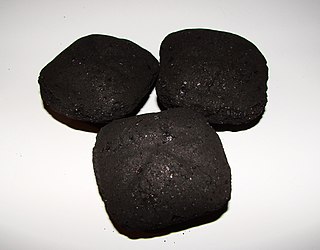 W
WA briquette is a compressed block of coal dust or other combustible biomass material used for fuel and kindling to start a fire. The term derives from the French word brique, meaning brick.
 W
WA bucket toilet is a basic form of a dry toilet whereby a bucket (pail) is used to collect excreta. Usually, feces and urine are collected together in the same bucket, leading to odor issues. The bucket may be situated inside a dwelling, or in a nearby small structure.
 W
WCeramic water filters (CWF) are an inexpensive and effective type of water filter that rely on the small pore size of ceramic material to filter dirt, debris, and bacteria out of water. This makes them ideal for use in developing countries, and portable ceramic filters are commonly used in backpacking.
 W
WClean Tech Nation: How the U.S. Can Lead in the New Global Economy is a 2012 book written by Ron Pernick and Clint Wilder. The book surveys the expansion of clean technology and renewable energy over the past decade. It tracks the growth of wind power and solar photovoltaics and shows that these markets grew 20 fold from 2000 to 2010. Factors which are driving the global expansion of clean tech are identified, as are the new economic opportunities which are being created. China, the United States, and Germany are leading the way. Clean Tech Nation is the sequel to the 2007 book The Clean Tech Revolution.
 W
WThe Clean Tech Revolution: The Next Big Growth and Investment Opportunity is a 2007 book by Ron Pernick and Clint Wilder, who say that commercializing clean technologies is a profitable enterprise that is moving steadily into mainstream business. As the world economy faces challenges from energy price spikes, resource shortages, global environmental problems, and security threats, clean technologies are seen to be the next engine of economic growth.
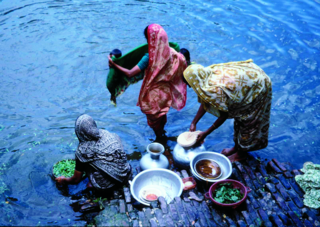 W
WDeveloped for a main use in Bangladesh, the cloth filter is a simple and cost-effective appropriate technology method for reducing the contamination of drinking water. Water collected in this way has a greatly reduced pathogen count - though it will not necessarily be perfectly safe, it is an improvement for poor people with limited options. Filtering water to free it from micro-organisms has been an age-old practice among Jains who carefully remove the micro-organisms in the cloth through filtered water in order to follow doctrine of Ahimsa or non-violence, preventing pain to any living creature.
 W
WCob, cobb or clom is a natural building material made from subsoil, water, fibrous organic material, and sometimes lime. The contents of subsoil naturally vary, and if it does not contain the right mixture it can be modified with sand or clay. Cob is fireproof, resistant to seismic activity, and uses low-cost materials, although it is very labour intensive. It can be used to create artistic and sculptural forms, and its use has been revived in recent years by the natural building and sustainability movements.
 W
WA composting toilet is a type of dry toilet that treats human waste by a biological process called composting. This process leads to the decomposition of organic matter and turns human waste into compost-like material, but does not destroy all pathogens. Composting is carried out by microorganisms under controlled aerobic conditions. Most composting toilets use no water for flushing and are therefore called "dry toilets".
 W
WA compressed earth block (CEB), also known as a pressed earth block or a compressed soil block, is a building material made primarily from damp soil compressed at high pressure to form blocks. Compressed earth blocks use a mechanical press to form blocks out of an appropriate mix of fairly dry inorganic subsoil, non-expansive clay and aggregate. If the blocks are stabilized with a chemical binder such as Portland cement they are called compressed stabilized earth block (CSEB) or stabilized earth block (SEB). Typically, around 3,000 psi (21 MPa) is applied in compression, and the original soil volume is reduced by about half.
 W
WA biomass cook stove is heated by burning wood, charcoal, animal dung or crop residue. Cook stoves are commonly used for cooking and heating food in rural households. Nearly half of the world's population, approximately 3 billion people, use solid fuels such as coal, wood, animal dung, and crop residues for their domestic energy needs. Among those who use indoor cooking stoves, the poorest families living in rural areas most frequently use solid fuels, where it continues to be relied on by up to 90% of households. Households in developing countries consume significantly less energy than those in developed countries; however, over 50% of the energy is for cooking food. The average rural family spends 20% or more of its income purchasing wood or charcoal for cooking. The urban poor also frequently spend a significant portion of their income on the purchase of wood or charcoal. Deforestation and erosion often result from harvesting wood for cooking fuel. The main goal of most improved cooking stoves is to reduce the pressure placed on local forests by reducing the amount of wood the stoves consume, and to reduce the negative health impacts associated with exposure to toxic smoke from traditional stoves.
 W
WThe Coolgardie safe is a low-tech food storage unit, using evaporative cooling to prolong the life of whatever edibles are kept in it. It applies the basic principle of heat transfer which occurs during evaporation of water. It was named after the place where it was invented – the small mining town of Coolgardie, Western Australia, near Kalgoorlie-Boulder.
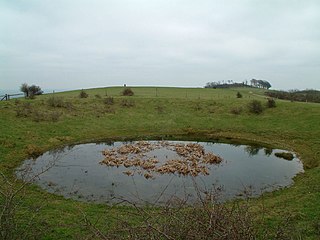 W
WA dew pond is an artificial pond usually sited on the top of a hill, intended for watering livestock. Dew ponds are used in areas where a natural supply of surface water may not be readily available. The name dew pond is first found in the Journal of the Royal Agricultural Society in 1865. Despite the name, their primary source of water is believed to be rainfall rather than dew or mist.
 W
WAn earth structure is a building or other structure made largely from soil. Since soil is a widely available material, it has been used in construction since prehistoric times. It may be combined with other materials, compressed and/or baked to add strength. Soil is still an economical material for many applications, and may have low environmental impact both during and after construction.
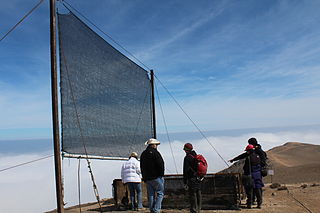 W
WFog collection refers to the collection of water from fog using large pieces of vertical mesh net to make the fog-droplets flow down towards a trough below, known as a fog fence, fog collector or fog net. Through condensation, atmospheric water vapour from the air condenses on cold surfaces into droplets of liquid water known as dew. The phenomenon is most observable on thin, flat, exposed objects including plant leaves and blades of grass. As the exposed surface cools by radiating its heat to the sky, atmospheric moisture condenses at a rate greater than that of which it can evaporate, resulting in the formation of water droplets.
 W
WFreight bicycles, carrier cycles, freight tricycles, cargo bikes, box bikes, or cycletrucks are human powered vehicles designed and constructed specifically for transporting loads. Vehicle designs include a cargo area consisting of an open or enclosed box, a flat platform, or a wire basket, usually mounted over one or both wheels, low behind the front wheel, or between parallel wheels at either the front or rear of the vehicle. The frame and drivetrain must be constructed to handle loads larger than those on an ordinary bicycle.
 W
WHand pumps are manually operated pumps; they use human power and mechanical advantage to move fluids or air from one place to another. They are widely used in every country in the world for a variety of industrial, marine, irrigation and leisure activities. There are many different types of hand pump available, mainly operating on a piston, diaphragm or rotary vane principle with a check valve on the entry and exit ports to the chamber operating in opposing directions. Most hand pumps are either piston pumps or plunger pumps, and are positive displacement.
 W
WHempcrete or hemplime is biocomposite material, a mixture of hemp hurds (shives) and lime, sand, or pozzolans, which is used as a material for construction and insulation. It is marketed under names like Hempcrete, Canobiote, Canosmose, Isochanvre and IsoHemp. Hempcrete is easier to work with than traditional lime mixes and acts as an insulator and moisture regulator. It lacks the brittleness of concrete and consequently does not need expansion joints. The result is a lightweight insulating material ideal for most climates as it combines insulation and thermal mass.
 W
WThe Hippo water roller, or Hippo roller, is a device used to carry clean water more easily and efficiently than traditional methods, particularly in the developing world and rural areas. It consists of a barrel-shaped container which holds the water and can roll along the ground, and a handle attached to the axis of the barrel. Currently deployed in rural Africa, its simple and purpose-built nature makes it an example of appropriate technology. The rollers cost around $125 each and they are mainly distributed by NGOs.
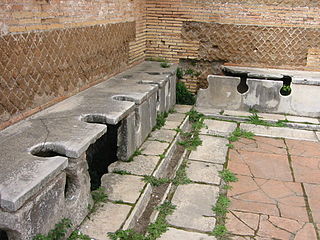 W
WA latrine is a toilet or an even simpler facility that is used as a toilet within a sanitation system. For example, it can be a communal trench in the earth in a camp to be used as emergency sanitation, a hole in the ground, or more advanced designs, including pour-flush systems.
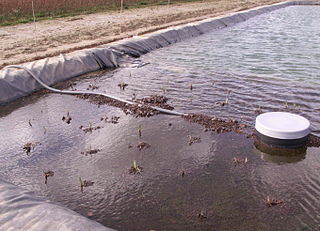 W
WA lava filter is a biological filter that uses lavastone pebbles as support material on which microorganisms can grow in a thin biofilm. This community of microorganisms, known as the periphyton break down the odor components in the air, such as hydrogen sulfide. The biodegradation processes that occurs is provided by the bacteria themselves. In order for this to work, sufficient oxygen as well as water and nutrients is to be supplied.
 W
WLight clay is a natural building material used to infill between a wooden frame in a timber framed building using a combination of clay and straw, woodchips or some other lighter material.
 W
WLiter of Light is an open source design for a low-cost light tube that refracts solar light to provide daytime interior lighting for dwellings with thin roofs. Daylighting is cheaper than using indoor electric lights during the day. The device is simple: a transparent two-liter bottle is filled with water plus a little bleach to inhibit algal growth and fitted into a hole in a roof. The device functions like a deck prism: during daytime the water inside the bottle refracts sunlight, delivering about as much light as a 40–60 watt incandescent bulb to the interior. A properly installed solar bottle can last up to 5 years.
 W
WThe lò trấu is a type of versatile fuel burning cook stove used in Vietnam since the 1950s. Lò trấu comes from lò (stove) and trấu. A kitchen with this kind of stove is a bếp trấu, "husk kitchen."
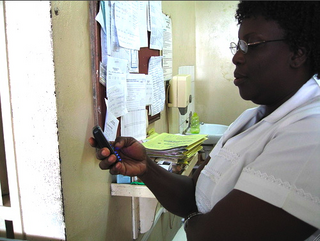 W
WmHealth is an abbreviation for mobile health, a term used for the practice of medicine and public health supported by mobile devices. The term is most commonly used in reference to using mobile communication devices, such as mobile phones, tablet computers and personal digital assistants (PDAs), and wearable devices such as smart watches, for health services, information, and data collection. The mHealth field has emerged as a sub-segment of eHealth, the use of information and communication technology (ICT), such as computers, mobile phones, communications satellite, patient monitors, etc., for health services and information. mHealth applications include the use of mobile devices in collecting community and clinical health data, delivery/sharing of healthcare information for practitioners, researchers and patients, real-time monitoring of patient vital signs, the direct provision of care as well as training and collaboration of health workers.
 W
WMicro hydro is a type of hydroelectric power that typically produces from 5 kW to 100 kW of electricity using the natural flow of water. Installations below 5 kW are called pico hydro. These installations can provide power to an isolated home or small community, or are sometimes connected to electric power networks, particularly where net metering is offered. There are many of these installations around the world, particularly in developing nations as they can provide an economical source of energy without the purchase of fuel. Micro hydro systems complement solar PV power systems because in many areas, water flow, and thus available hydro power, is highest in the winter when solar energy is at a minimum. Micro hydro is frequently accomplished with a pelton wheel for high head, low flow water supply. The installation is often just a small dammed pool, at the top of a waterfall, with several hundred feet of pipe leading to a small generator housing. In low head sites, generally water wheels and Archimedes screws are used.
 W
WA mudbrick or mud-brick is an air-dried brick, made of a mixture of loam, mud, sand and water mixed with a binding material such as rice husks or straw. Mudbricks are known from 9000 BCE, though since 4000 BC, bricks have also been fired, to increase their strength and durability.
 W
WA netbook belongs to a class of small, low-performance, legacy-free, and inexpensive laptop computers introduced in 2007. Netbooks typically compete in the same market segment as mobiles, tablets and Chromebooks.
 W
WA nettop is a small-sized, inexpensive, low-power, legacy-free desktop computer designed for basic tasks such as web browsing, accessing web-based applications, document processing, and audio/video playback. The word nettop is a portmanteau of network and desktop. It is the desktop counterpart of the netbook. Modern (c.2020) Mini PCs or Small form factor PCs can be much more powerful, being equipped with high-end laptop components or mid-range desktop components.
 W
WAn outhouse is a small structure, separate from a main building, which covers a toilet. This is typically either a pit latrine or a bucket toilet, but other forms of dry (non-flushing) toilets may be encountered. The term may also be used to denote the toilet itself, not just the structure.
 W
WThe Personal Internet Communicator (PIC) is a consumer device released by AMD in 2004 to allow people in emerging countries like India, Uruguay and the Caribbean access to the internet. Originally part of AMD's 50x15 Initiative, the PIC has been deployed by Internet service providers (ISPs) in several developing countries. It is based on an AMD Geode CPU and uses Microsoft Windows CE and Microsoft Internet Explorer 6.
 W
WPico hydro is a term used for hydroelectric power generation of under 5 kW. These generators have proven to be useful in small, remote communities that require only a small amount of electricity – for example, to power one or two fluorescent light bulbs and a TV or radio in 50 or so homes. Even smaller turbines of 200–300 W may power a single home in a developing country with a drop of only one meter. Pico-hydro setups typically are run-of-stream, meaning that a reservoir of water is not created, only a small weir is common, pipes divert some of the flow, drop this down a gradient, and through the turbine before being exhausted back to the stream.
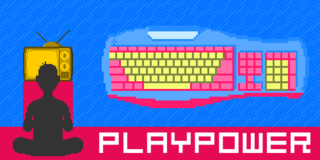 W
WPLAYPOWER is a 2008-started non-profit organization designed to create free educational computer software for low income families in India and other developing countries. After 2012 the project was reformed as Playpower Labs, LLC, which focuses now on educational games for mobile platforms.
 W
WThe Portable Aqua Unit for Lifesaving, also known as Water Backpack is a portable membrane water filter developed at the University of Kassel for humanitarian aid. It allows the decentralized supply of clean water in emergency and disaster situations.
 W
WA pot-in-pot refrigerator, clay pot cooler or zeer is an evaporative cooling refrigeration device which does not use electricity. It uses a porous outer clay pot containing an inner pot within which the food is placed. The evaporation of the outer liquid draws heat from the inner pot. The device can cool any substance, and requires only a flow of relatively dry air and a source of water.
 W
WRainwater harvesting (RWH) is the collection and storage of rain, rather than allowing it to run off. Rainwater is collected from a roof-like surface and redirected to a tank, cistern, deep pit, aquifer, or a reservoir with percolation. Dew and fog can also be collected with nets or other tools. Rainwater harvesting differs from stormwater harvesting as the runoff is collected from roofs, rather than creeks, drains, roads, or any other land surfaces. Its uses include watering gardens, livestock, irrigation, domestic use with proper treatment, and domestic heating. The harvested water can also be committed to longer-term storage or groundwater recharge.
 W
WA rainwater tank is a water tank used to collect and store rain water runoff, typically from rooftops via pipes. Rainwater tanks are devices for collecting and maintaining harvested rain. A rainwater catchment or collection system can yield 2,358 litres (623 US gal) of water from 2.54 cm (1.00 in) of rain on a 92.9 m2 (1,000 sq ft) roof.
 W
WRammed earth, also known as taipa in Portuguese, tapial or tapia in Spanish, tàpia in Catalan, pisé in French, bijenica in Serbian, and hāngtǔ (夯土) in Chinese, is a technique for constructing foundations, floors, and walls using natural raw materials such as earth, chalk, lime, or gravel. It is an ancient method that has been revived recently as a sustainable building method.
 W
WThe Simputer was a self-contained, open hardware Linux-based handheld computer, first released in 2002. Developed in, and primarily distributed within India, the product was envisioned as a low-cost alternative to personal computers. With initial goals of selling 50,000 simputers, the project had sold only about 4,000 units by 2005, and has been called a failure by news sources.
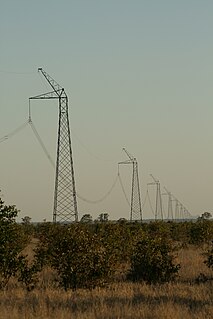 W
WSingle-wire earth return (SWER) or single-wire ground return is a single-wire transmission line which supplies single-phase electric power from an electrical grid to remote areas at low cost. Its distinguishing feature is that the earth is used as the return path for the current, to avoid the need for a second wire to act as a return path.
 W
WSlow sand filters are used in water purification for treating raw water to produce a potable product. They are typically 1 to 2 metres deep, can be rectangular or cylindrical in cross section and are used primarily to treat surface water. The length and breadth of the tanks are determined by the flow rate desired by the filters, which typically have a loading rate of 200 to 400 litres per hour per square metre.
 W
WSoft energy technologies may be seen as appropriate renewable technologies. Soft energy technologies are not simply renewable energy technologies, as there are many renewable energy technologies which are not regarded as "soft". The character string including "Soft Energy" is a registered trademark of Soft Energy Controls Inc. in Japan.
 W
WSolar water disinfection, in short SODIS, is a type of portable water purification that uses solar energy to make biologically-contaminated water safe to drink. Water contaminated with non-biological agents such as toxic chemicals or heavy metals require additional steps to make the water safe to drink.
 W
WA stirrup pump is a portable reciprocating water pump used to extinguish or control small fires. It is operated by hand. The operator places a foot on a stirrup-like bracket at the bottom of the pump to hold the pump steady, the bottom of the suction cylinder was placed inside a bucket of water.
 W
WStormwater harvesting or stormwater reuse is the collection, accumulation, treatment or purification, and storage of stormwater for its eventual reuse. While rainwater harvesting collects precipitation primarily from rooftops, stormwater harvesting deals with collection of runoff from creeks, gullies, ephemeral streams, and other ground conveyances. It can also include catchment areas from developed surfaces, such as roads or parking lots, or other urban environments such as parks, gardens and playing fields.
 W
WSuperadobe is a form of earthbag construction that was developed by Iranian architect Nader Khalili. The technique uses layered long fabric tubes or bags filled with adobe to form a compression structure. The resulting beehive-shaped structures employ corbelled arches, corbelled domes, and vaults to create sturdy single and double-curved shells. It has received growing interest for the past two decades in the natural building and sustainability movements.
 W
WSynthetic biology (SynBio) is a multidisciplinary area of research that seeks to create new biological parts, devices, and systems, or to redesign systems that are already found in nature.
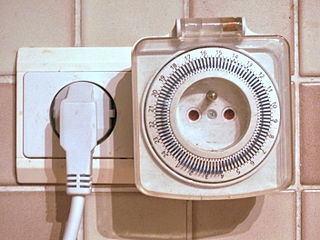 W
WA time switch is a timer that operates an electric switch controlled by the timing mechanism.
 W
WA treadle pump is a human-powered suction pump that sits on top of a well and is used for irrigation. It is designed to lift water from a depth of seven metres or less. The pumping is activated by stepping up and down on a treadle, which are levers, which drive pistons, creating cylinder suction that draws groundwater to the surface.
 W
WThe universal nut sheller is a simple hand-operated machine capable of shelling up to 57 kilograms (126 lb) of raw, sun-dried peanuts per hour.
 W
WThe pumping of water is a basic and practical technique, far more practical than scooping it up with one's hands or lifting it in a hand-held bucket. This is true whether the water is drawn from a fresh source, moved to a needed location, purified, or used for irrigation, washing, or sewage treatment, or for evacuating water from an undesirable location. Regardless of the outcome, the energy required to pump water is an extremely demanding component of water consumption. All other processes depend or benefit either from water descending from a higher elevation or some pressurized plumbing system.
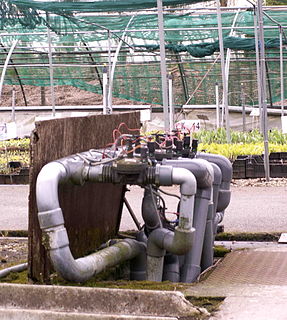 W
WA water timer is an electromechanical device that, when placed on a water line, increases or decreases the water flow through the use of an electro-mechanically actuated ball valve or embedded (solenoid) valve. It is used in conjunction with irrigation sprinklers to form an automated or non-automated sprinkler system, capable of administering precise amounts of water, at a regular basis. A water flow timer using a ball valve contains an electric motor with gears to stop or start the water flow by turning a perforated ball within the water flow line. The gearbox in a ball valve timer makes a rumbling sound when actuated. The solenoid type switching timers contain a solenoid that relieves pressure on a diaphragm in the water-flow tube or moves a stopper into the water flow area to regulate flow. The solenoid type uses no gears and makes a tapping sound when the solenoid is activated. Battery powered garden hose timers are the most commonly seen water timers and are seen in two types, the ball valve timer that is actuated by a motor with gears, and the diaphragm timer that is actuated by a solenoid. The solenoid/diaphragm timer uses more battery power throughout the "on" cycle because the solenoid must be actuated the entire time that the water flow is "on". The ball valve timer using the motor and gear actuator only uses more battery power during the few seconds that motor is used to turn the water flow "on" or "off".
 W
WA waterladder pump, water ladder, dragon spine, dragon wheel or rahad is a low lift pump which is composed of sprockets that move a chain with paddles over a trough. Water is pumped as the paddles push the water up the trough.
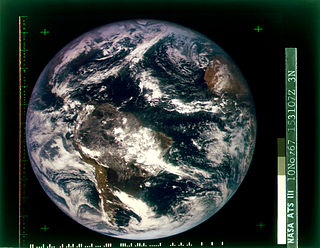 W
WThe Whole Earth Catalog (WEC) was an American counterculture magazine and product catalog published by Stewart Brand several times a year between 1968 and 1972, and occasionally thereafter, until 1998. The magazine featured essays and articles, but was primarily focused on product reviews. The editorial focus was on self-sufficiency, ecology, alternative education, "do it yourself" (DIY), and holism, and featured the slogan "access to tools". While WEC listed and reviewed a wide range of products, it did not sell any of the products directly. Instead, the vendor's contact information was listed alongside the item and its review. This is why, while not a regularly published periodical, numerous editions and updates were required to keep price and availability information up to date.
 W
WA windcatcher is a traditional architectural element used to create natural ventilation and passive cooling in buildings. Windcatchers come in various designs: unidirectional, bidirectional, and multidirectional. Windcatchers are widely used in North Africa and in the West Asian countries around the Persian Gulf, and have been for the past three thousand years.
 W
WA zero-emissions vehicle, or ZEV, is a vehicle that never emits exhaust gas from the onboard source of power.